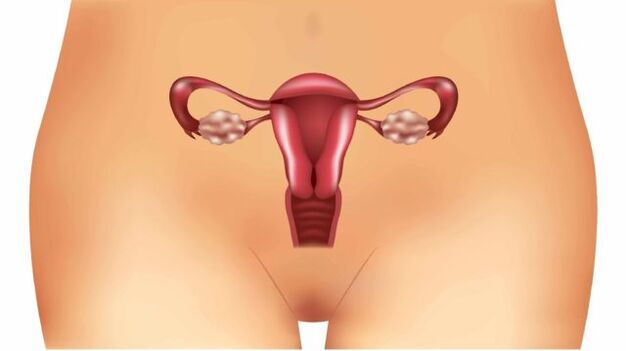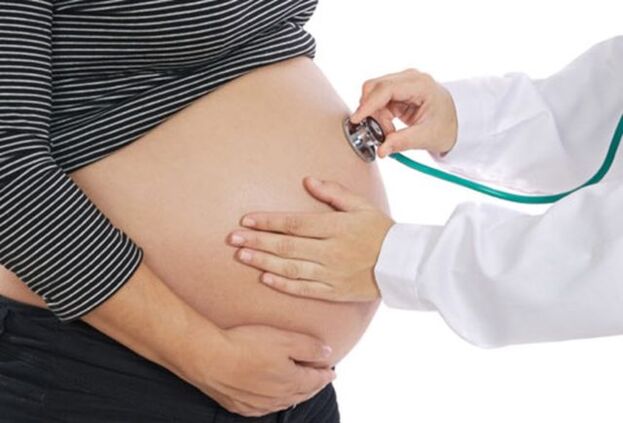Almost everyone has heard of varicose veins. In most people, this vascular disease is associated with leg problems, but often the pelvic organs become the place of localization of the pathological process. One of the types of this pathology is varicose veins of the uterus.
The disease is mainly diagnosed in women or girls who have reached reproductive age, but in some cases it also develops in adolescent girls. In order to cope with the pathology, it is important to know the main causes and symptoms of its occurrence, as well as to have an idea about the methods of treatment.
Features of the pathology
Varicose veins of the uterus, what is it? This medical term refers to a disease caused by a number of pathological factors affecting the venous network of the pelvic organs:
- thinning of the vessel walls.
- The formation of vascular nodules.
- Enlargement of the venous lumen.
These three factors impair blood circulation in a separate part of the organ and lead to valvular insufficiency of veins in the same area. The disease is difficult to diagnose due to the lack of obvious clinical signs, and also due to the similarity with inflammatory diseases of the pelvic organs. For these reasons, the pathology is often detected in severe stages, when its treatment is much more complicated.
Gynecologists distinguish two subspecies of the pathological process:
- varicose veins of the uterus.
- Varicose veins of the cervix.
In any case, the disease is dangerous for its complications, including inflammatory processes that cover the uterus, ovaries and vagina. The most serious complication is infertility.

causes of the disease
Understanding the underlying factors in the development of the disease offers several key benefits. First, it allows the doctor to diagnose faster and more accurately and prescribe appropriate treatment. Secondly, a woman can try to prevent the development of any pathology.
Consider the most likely causes of uterine varicose veins:
- Pregnancy is considered the main factor in the development of the pathological process. Already at the embryonic stage and then as the fetus grows and develops, uterine circulation increases (much depends on the period). At the same time, the function of the valves in vessels with a weakened vein wall is disturbed and they are stretched. In addition, a growing fetus increases the load on the pelvic organs, which can also give a boost to the development of the disease.
- Taking hormonal drugs for a long time. Specific drugs adversely affect the condition of the vessels, their walls lose their elasticity.
- Another factor provoking the disease is reduced motor activity. A sedentary or sedentary lifestyle leads to a decrease in the contractile function of the muscles, the consequence is a violation of blood circulation.
- Increased physical activity in the pelvic area. In this case, as in pregnancy, blood flow to the pelvic organs, especially the uterus, increases.
- Increased constipation - in this case, the cause of varicose veins again becomes an increase in blood flow. However, blood flow is now increased by increased intra-abdominal pressure.
- Congenital abnormalities in the structure of the uterus.
- Artificial termination of pregnancy.
- Difficult Birth.
- Inflammatory processes in the pelvic organs.
symptoms and diagnosis
The complexity of diagnosing uterine varicose veins lies in the fact that the symptoms of this disease are masked as other pathologies. In addition, the clinical picture, which indicates the development of the disease, is rather bad:
- Frequent pain in the lower abdomen, closer to the pubic region, recurring more than 3-4 times a week. The pain syndrome is pronounced, the nature of the pain is pulling and aching. In some cases, the pain is so severe that the woman loses her ability to work and has difficulty getting out of bed.
- More than 80% of women with uterine varicose veins experience discomfort or even pain during or after intercourse.
- Violation of the menstrual cycle, delays in menstruation of up to 50-60 days are possible. In this case, the discharge is often scanty, menstruation lasts about 5-7 days. The persistent absence of menstruation is the first sign of menopause for many women.
This clinical picture is inherent in a number of other gynecological diseases. Because of this, it is impossible to make a diagnosis based only on symptoms, the doctor is obliged to prescribe a number of diagnostic measures. In addition, with varicose veins of the cervix, the symptoms are about the same.
Important: varicose veins of the uterus are diagnosed mainly in the second stage, since it is at this time that the described symptoms begin to bother the woman. The earlier the pathology is detected and treatment is started, the less the likelihood of complications, especially infertility.
For the directly assigned studies, these are as follows:
- Ultrasound performed by the transvaginal method.
- CT of the pelvic organs.
- Dopplerography.
- Selective ovariography.
The need for any diagnostic method depends on the data obtained by ultrasound, since they are carried out first.
Features of the disease during pregnancy
Due to the increased stress on the whole body and pelvic organs during pregnancy, the likelihood of developing uterine varicose veins increases. Until a woman gives birth, the disease is untreatable.

Pathology that develops during pregnancy affects the choice of childbirth method. Very often, the doctor decides on a caesarean section. This is done in order to avoid complications in the form of thrombophlebitis, internal bleeding, thrombosis, etc.
Regardless of what period of pregnancy the disease was detected, a woman must be constantly monitored by a doctor to monitor the condition of the fetus and the progression of varicose veins.
Important: When planning a pregnancy, get yourself examined to detect uterine varicose veins and other gynecological problems. This will help prevent complications during childbirth and reduce the risk of fetal developmental disorders.
treatment of the disease
In order to get qualified help with varicose veins, you need to contact a doctor, first - a gynecologist, who will then refer you to a phlebologist.
The basis of treatment is drug therapy, which consists of taking the following drugs:
- Venotonics - drugs of this group have a positive effect on the condition of blood vessels. They tonify capillaries and blood vessels, reduce their permeability, increase elasticity and strengthen the walls of veins.
- Drugs that reduce blood viscosity - contribute to a general improvement in the inflow and outflow of blood in the affected vessels, reduce the likelihood of thrombosis. Means of this group are contraindicated in pathologies of the cardiac system.
Important: All drugs are prescribed only by a doctor based on a preliminary diagnosis, the patient's medical history and taking into account the stage of development of the disease. It is important to note special care for women in position.
treatment methods
In addition to drug therapy for full treatment, an integrated approach and implementation of the following recommendations are important:
- compliance with the sleep regime;
- minimizing physical activity while maintaining mobility;
- following a diet rich in vegetables, fruits and oils rich in vitamin E;
- support sport, remedial gymnastics;
- complete exclusion of any bad habits;
- Some doctors recommend Kegel exercises, which help strengthen vaginal muscles.
Surgical intervention
Such drastic measures are necessary when conservative treatment has not brought sufficient results or the disease was only recognized late. The following methods of surgical intervention are the most popular:
- Phlebectomy is the removal of individual sections of small vessels.
- Laser coagulation is the most gentle way of restoring normal blood flow.
- Sclerotherapy is the introduction of a drug into the cavity of a vein that promotes its adhesion. The lack of blood supply in the vessel leads to its spontaneous elimination.
- In the most severe cases, it is necessary to remove the uterus completely, sometimes along with the appendages.
ethnoscience
Alternative methods are one of the options for complex treatment in a conservative way. They cannot completely replace drug therapy, but can generally impair the success of the therapy.
The most effective means of traditional medicine are:
- Horse chestnut infusion: Take 100 grams of chestnuts and chop them together with the peel. Pour the resulting raw material with such an amount of vodka that it covers the crushed fruit by 4-5 millimeters. Insist in a dark place for 14-15 days. After that, the infusion is taken twice a day with 10 drops. The tool strengthens the vascular walls and thins the blood.
- Lilac tincture: for 0. 5 liters of vodka you need to take 100 grams of lilac flowers and 30 grams of propolis. All ingredients are poured with vodka and kept in a dark place for 30 days (you need to shake every 2-3 days). Then the tincture is filtered and taken 15 milliliters three times a day before meals.
Remember that before using even the most harmless traditional medicine, you should consult a doctor.
complications of the disease
Varicose veins of the uterus are dangerous for their complications in the absence of proper treatment. These complications are as follows:
- internal bleeding;
- Thrombosis;
- inflammatory processes of the genital organs;
- menstrual irregularities;
- hormonal dysfunction of the ovaries;
- Infertility.
Precautions
It is always better to prevent a disease and prevent its development than to deal with it or its consequences later. Follow these simple guidelines to prevent uterine varicose veins:
- Lead a mobile lifestyle, walk more and walk;
- practice gymnastics;
- eat healthy food, less greasy, fried, hot, spicy, sour;
- Visit the gynecologist regularly, especially with the slightest discomfort.

Despite the difficulties in detecting varicose veins of the uterine veins, in order to avoid the progression of the disease and complications, if the symptoms described above appear, consult a doctor. It is also important to remember that self-treatment in such cases is contraindicated, careful diagnosis and constant monitoring by a gynecologist and phlebologist are required.














































